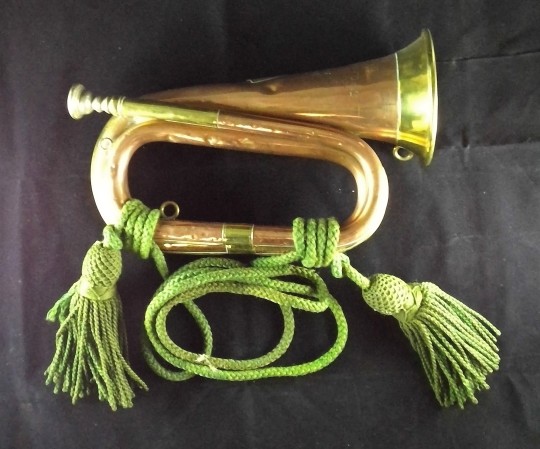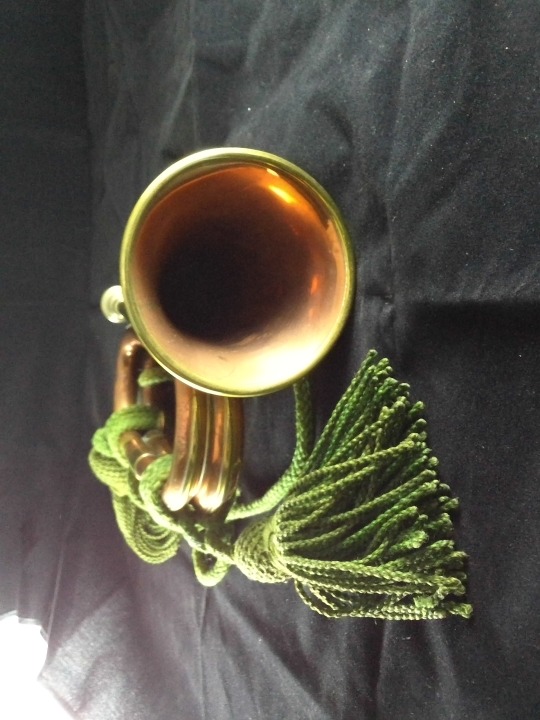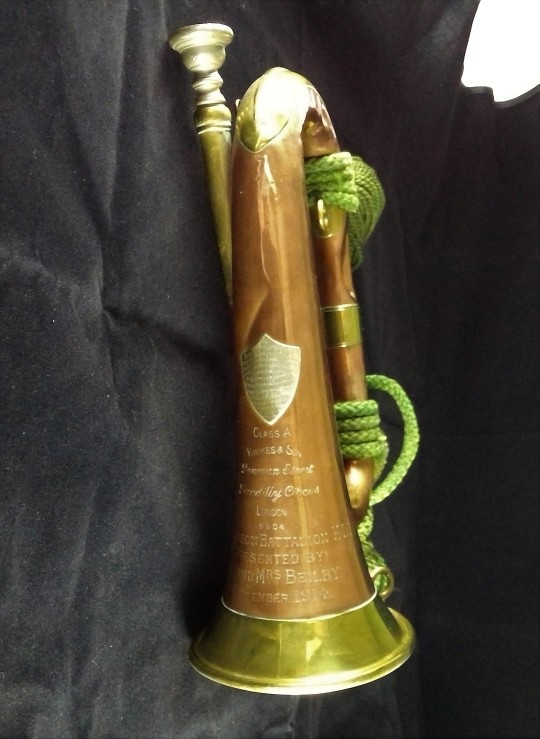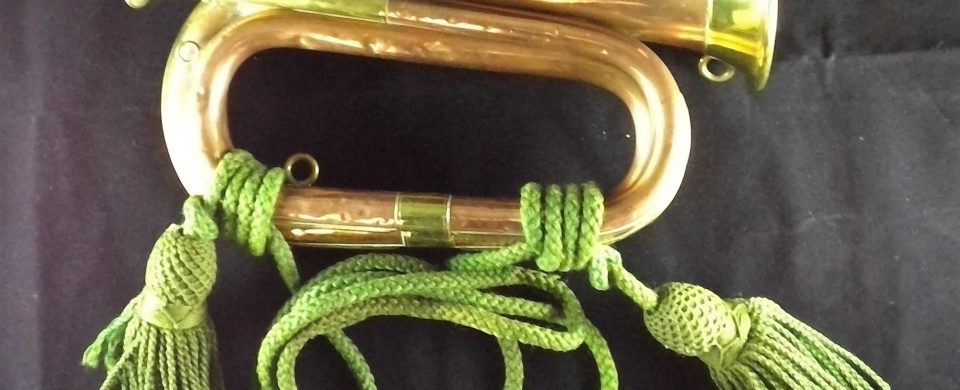This month our visitors has decided on object that while deeply rooted to military music history, it could be easily one of our key exhibits on Great War patriotism and spontaneous recruitment that happened in the dawn of the war as well as eagerness of Glaswegian people to join efforts of the war. It links together as an object two most important people for A Company, 17th Battalion, The Highland Light Infantry (17 HLI). This shows that when great people of this city were asked for commitment, they did not hesitate even for a moment.

James W Murray received this bugle “in recognition of services which he endured in the formation and equipping of the 17th battalion HLI and of the interest he took in the battalion while on active service”. The man himself during the war was first Vice-President between 1914 and 1915 and then President of the Chamber of Commerce of Glasgow in years 1916 – 1918. James Murray became President of Chamber of Commerce on the death of Montagu M W Baird, who died on 14 October 1915; and he was responsible for the formation of 17 HLI, which became known as Glasgow Chamber of Commerce Battalion (the Commercials).

This bugle was presented to him by the Battalion Committee after the war.
Sir George Thomas Beilby FRS (known as Dr Beilby), knighted in 1916, with his wife Emma, purchased the bugles – not as a purely as a symbolic gift, but as part of equipment necessary for the newly-formed Battalion. We are not certain how many of the instruments were originally presented or how many has survived to this day; but we do know that he was closely involved in formation of A Company. A Company was recruited from students of the Royal Technical College in Glasgow, where he was Chairman of the Governors from 1907. Due to his long and successful life, he has come to be well-known as a prominent Scottish industrial chemist, national adviser and benefactor.

Lastly, the copper bugle was made by Hawkes & Son and sold at Piccadilly Circus in London. The bugle is a member of the family of instruments called “tuba” by romans. It arrived in Britain with Hanoverian dynasty and its ancestor, the Halbmond, was first developed as a hunting instrument; not becoming a military instrument until the second half of 18th century when it was mainly used by light troops in Germany. It arrived in Britain, with the Hanovarian accession, and was known as a bugle horn. By 1778, was commonly used by light troops and the first bugle calls were taken from Hanover inspired by hunting traditions. Around 1800, it was remodelled into the bell-front trumpet that we know today, perhaps by William Shaw of London. It became an official Army instrument in 1812 and after the Crimean War changed into the double-looped variation.
This object is not only an excellent representation of copper bugles but also has a fascinating history in the city battalions during WWI. It also is part of a much more important statement, of how the Regiment was at the centre of Glaswegian history: being not only a reminder of soldiers and to their past, but also living statement of how the Regiment did not exist outside the community. Similarly, of course, the community would not be the same without the Regiment.

